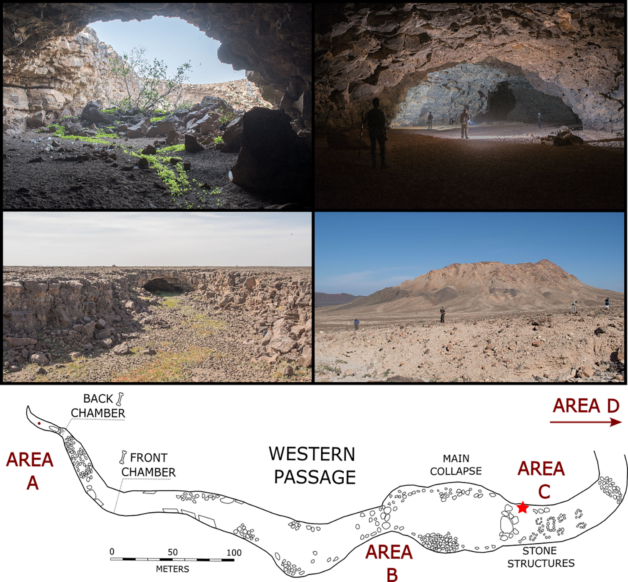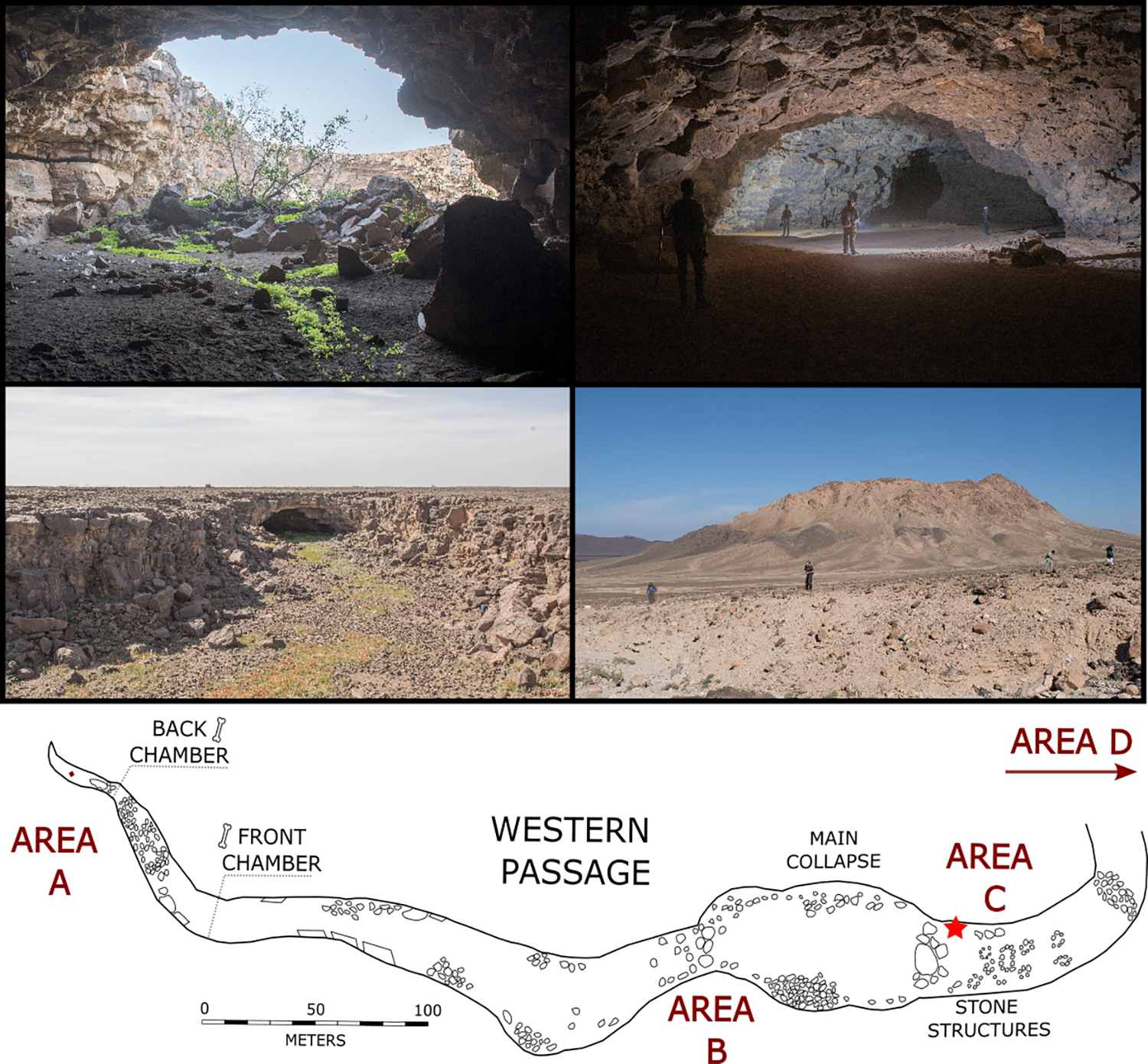The scholarly journal PLOS One published a study by a group of researchers led by Mathew Stewart of Griffith University in Australia examination of evidence for humans inhabiting lava tubes starting in the Neolithic era. The paper’s abstract says:
Recent advances in interdisciplinary archaeological research in Arabia have focused on the evolution and historical development of regional human populations as well as the diverse patterns of cultural change, migration, and adaptations to environmental fluctuations. Obtaining a comprehensive understanding of cultural developments such as the emergence and lifeways of Neolithic groups has been hindered by the limited preservation of stratified archaeological assemblages and organic remains, a common challenge in arid environments. Underground settings like caves and lava tubes, which are prevalent in Arabia but which have seen limited scientific exploration, offer promising opportunities for addressing these issues. Here, we report on an archaeological excavation and a related survey at and around Umm Jirsan lava tube in the Harrat Khaybar, north-western Saudi Arabia. Our results reveal repeated phases of human occupation of the site ranging from at least the Neolithic through to the Chalcolithic/Bronze Age. Pastoralist use of the lava tube and surrounding landscape is attested in rock art and faunal records, suggesting that Umm Jirsan was situated along a pastoral route linking key oases. Isotopic data indicates that herbivores primarily grazed on wild grasses and shrubs rather than being provided with fodder, while humans had a diet consistently high in protein but with increasing consumption of C3 plants through-time, perhaps related to the emergence of oasis agriculture. While underground and naturally sheltered localities are globally prominent in archaeology and Quaternary science, our work represents the first such combined records for Saudi Arabia and highlight the potential for interdisciplinary studies in caves and lava tubes.
Read the entire paper:
https://journals.plos.org/plosone/article?id=10.1371/journal.pone.0299292.
Thanks to Soror Amy for the tip!


